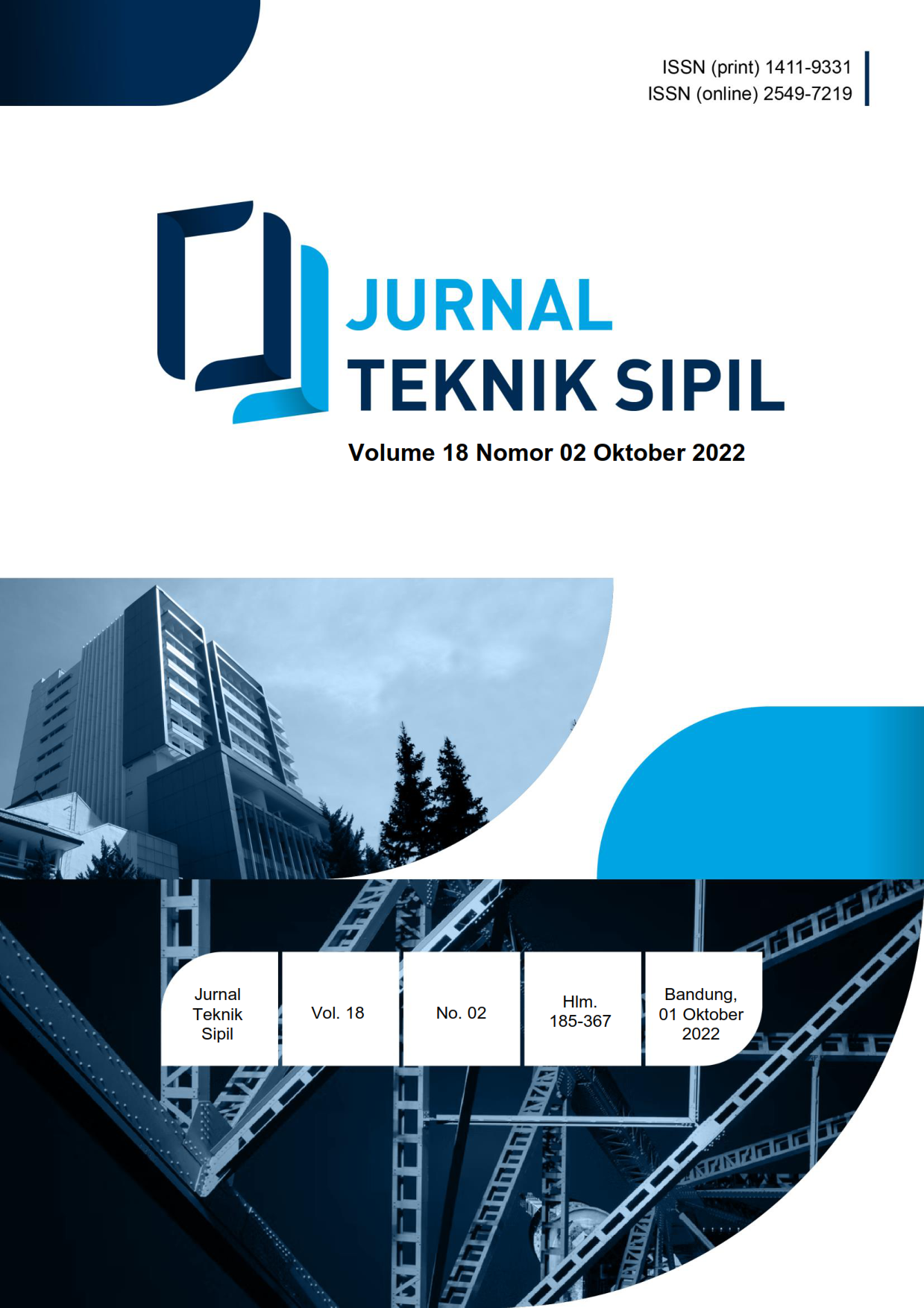PERFORMANCE EVALUATION OF 34 FLOORS BUILDING STRUCTURE IN SURABAYA BASED ON SNI 1726:2012 AND SNI 1726:2019
DOI:
https://doi.org/10.28932/jts.v18i2.3807Keywords:
Performance Level, Nonlinear Time History Analysis, Story Drift RatioAbstract
Indonesia has undergone several earthquake regulations updates, starting from Peraturan Muatan Indonesia 1970 to SNI 1726:2019. This update requires earthquake loads with a larger return period. This has an impact on the existing buildings that were planned to use the old regulations. It is feared that the building does not meet the requirements required by the new regulations, so a review of the performance of the building is needed. This research will use a case study of a Cornell apartment building with 34 floors in the city of Surabaya, which is planned based on SNI 1726:2012 with concrete regulations SNI 2847:2013 and will be evaluated with SNI 1726:2019. The analysis uses Performance Based Design with the Nonlinear Time History Analysis method which was carried out in the 2016 ETABS program. The background to the use of the Performance Based Design method is its use which is quite easy to apply and can also be used to measure the efficiency of the structure being reviewed. The use of Nonlinear Time History Analysis is based on the fact that the use of this method has been regulated in SNI 1726:2019 and the use of this method is considered closest to the actual conditions in the field. Nonlinear Time History analysis in this study uses time history data from the Chichi earthquake in Taiwan in 1999. The evaluation of building performance is based on the performance level refer to FEMA 356. The results of the case study on the comparison of the two regulations show that there is an increase in the basic earthquake force by 1.02%. Meanwhile, in relation to drift ratio analysis, an increase of 1% on the X axis and 5.5% on the Y axis is obtained.Downloads
References
Astawa, M. D., Tavio, & Raka. (2011). Elemen Struktur Hubungan Balok Beton Pratekan Parsial - Kolom Beton Bertulang Tahan Gempa yang Handal dan Daktail pada SRPMK. INDONESIAN STRUCTURAL ENGINEERING AND MATERIAL SYMPOSIUM, 1-9.
ATC - 40. (1996). Seismic Evaluation and Retrofit of Concrete Building. California: California Seismic Safety Commision.
FEMA 356: (2000). (2000). Prestandard and Commentary for the Seismic Rehabilitation of Buildings. United States of America : FEMA.
Handoko, C., & Setiawan, R. (2018). Kinerja Struktur Yang Direncanakan Berdasarkan Peraturan Gempa Tahun 2002 Terhadap SNI 1726:2012: Studi Kasus Struktur Hotel X Di Kupang. Jurnal Dimesi Pratama Teknik Sipil.
Purba, H. (2014). Analisis Kinerja Struktur pada Bangunan Bertingkat Beraturan dan Ketidakberaturan Horizontal sesuai SNI 03-1726-2012. Jurnal Teknik Sipil dan Lingkungan, 710.
Purwono, R. (2005). Perencanaan Struktur Beton Bertulang Tahan Gempa. Surabaya: ITS Press.
Putra, A., & Lesmana, C. (2018). Analisis Kelayakan Struktur Bangunan Publik 5 Lantai di Jakarta. Jurnal Teknik Sipil Maranatha.
Setiawan, J., & Imran, I. (2014). Evaluasi Geser Dasar Minimum pada SNI 1726:2012. Jurnal Teknik Sipil Maranatha.
SNI 1726:2019. (2019). Tata Cara Perencanaan Ketahanan Gempa untuk Struktur Bangunan Gedung dan Non Gedung. Jakarta: Badan Standarisasi Nasional.
SNI 1727:2013. (2013). Beban Minimum untuk Perancangan Bangunan Gedung dan Struktur Lain. Jakarta: Badan Standarisasi Nasional.
SNI 2847:2013. (2013). Tata Cara Perhitungan Struktur Beton untuk Bangunan Gedung. Jakarta: Badan Standarisasi Nasional.
Sunarjo, & Gunawan, T. (2012). Gempa Bumi. In Gempa Bumi (pp. 26-27). Jakarta: Badan Meteorologi Klimatologi dan Geofisika.
Additional Files
Published
How to Cite
Issue
Section
License
Copyright (c) 2022 Adi Nugroho Santoso, Made Dharma Astawa

This work is licensed under a Creative Commons Attribution-NonCommercial 4.0 International License.















